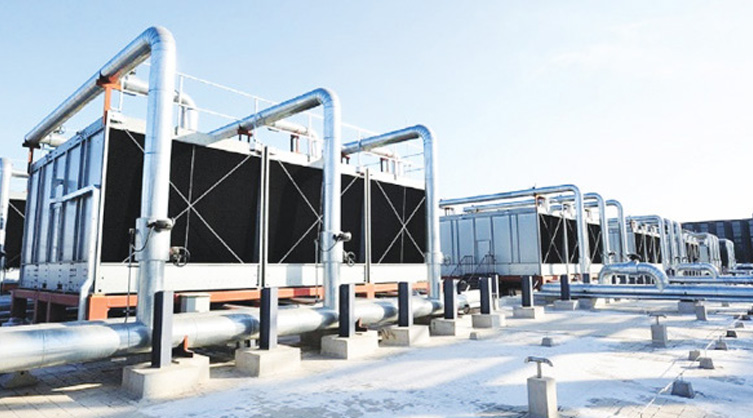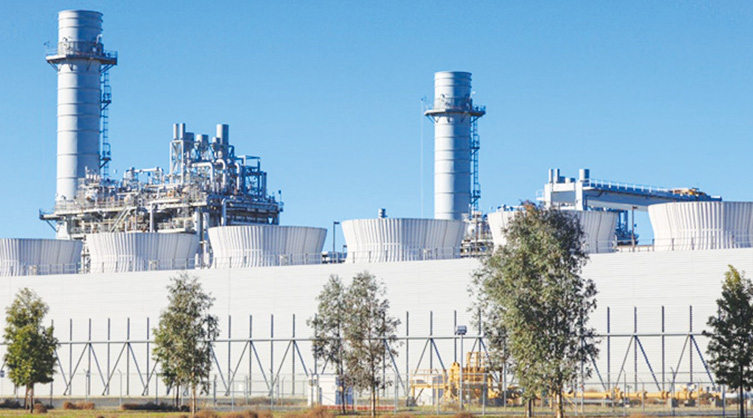Cooling towers offer water and energy savings for data centre
By EPR Magazine Editorial June 5, 2023 2:43 pm IST
By EPR Magazine Editorial June 5, 2023 2:43 pm IST

Evaporative cooling towers have emerged as a significant component of data centre cooling infrastructure. However, concerns have been raised about water scarcity, prompting a closer examination of water usage in cooling towers and its comparison to water consumption in regional fossil fuel power plants.
The number of data centres in the United States continues to grow in response to the enormous amount of digital information stored and streamed. The massive computer power within these data centres generates heat, making efficient cooling a key building system requirement.
Evaporative cooling towers are an integral part of many data centre cooling systems. Recently, some have questioned the use of cooling towers, citing water scarcity to bolster their arguments. But a thorough examination of water use for local onsite cooling towers compared to water use to generate power at regional fossil fuel power plants reveals surprising results.

Data Centre Cooling Options
There are multiple ways to cool data centres, depending on their size, the computer capacity that must be cooled, regional energy costs, and the data load and density. Popular options include:
• Water-cooled chiller plant, which includes the chiller system, pumps, cooling tower, and plate or frame heat exchanger in series with the chiller.
• Air-cooled chiller plant, including chiller system and pumps.
• Direct evaporative cooling, without mechanical refrigeration, is also referred to as ‘swamp cooling.’
• Adiabatic cooling: an air-cooled system assisted by a watercooled system during peak conditions
To attract customers, data centre operators weigh the options and look for systems that reduce operating costs and environmental impact. They pay close attention to power use effectiveness (PUE), defined as the ratio of the total amount of energy used by a data center to the energy delivered to the computing equipment. A PUE of 1 means the heat rejection power equals the power used for the computing equipment.
Data centre operators are also concerned about water use effectiveness (WUE). Cooling towers evaporate water, but the impact depends on location. According to Tim Chiddix, PE, VP Mechanical Engineering at Swanson Rink, a leader in the design of data centre facility infrastructure, data centres can range from a few hundred square feet to several hundred thousand square feet, and no cooling technology works well for all regions, client criteria, or applications. “Every facility must be analysed to determine the approach that best meets the needs of the customer and takes advantage of the energy and water savings opportunities of the particular region.”
Swanson Rink specifies equipment as part of its data centre practice and frequently combines cooling towers with mechanical chillers for efficient cooling.

Water use issues must be evaluated holistically
The extended drought throughout the Western states has caused many companies to re-examine the impact of water usage for cooling data centres. Some have questioned whether onsite cooling towers use too much water given these shortages. In evaluating the best cooling strategy for a data centre, it is critical to view water usage holistically, including water use where the power is made. When viewed in this light, mechanical evaporative cooling systems are often far more efficient than alternative dry systems.
The amount of water used by the steam cycle of a fossil-fuel-based power plant to generate electricity may be greater than the amount of water used by the data centre cooling tower. An example is an air-cooled system that uses 1 megawatt (MW) of power per year compared with a water-cooled system that uses 0.5 MW per year and 3,000 gallons of water per minute. The number of gallons the power plant uses to make the additional 0.5 MW to power the air-cooled system is actually greater than the amount of water that would be used locally by the water-cooled system’s cooling tower. Cutting down on the energy used by power plants may actually save water.
Swanson Rink’s Tim Chiddix and Brook Zion evaluated the water use issue in a white paper, “Data Centre Water.”
The authors note that water is a more efficient medium than air for removing heat because evaporation enhances the cooling process. “Using water-cooled condensing systems versus air-cooled condensing systems can significantly reduce your cooling energy costs; however, the effectiveness of evaporative cooling is very location-dependent, since the drier climate results in greater efficiency.”They studied whether this energy reduction comes with an increase in onsite water usage due to evaporation. They also considered whether this evaporation is wasting water and whether data centre owners should consider air-cooled equipment instead. The evaluation compared sample data centres located in Denver, Phoenix, and Los Angeles. It examined the regional power grid to determine how much water the power companies consume to produce a kilowatt-hour (kWh) of power. Water consumption rate data from the National Renewable Energy Laboratory (NREL) technical report TP-550-33906 is shown in Table 1.

Table 1. Average water consumption at power plants
The study looked at cooling for a sample data centre with a steady 1,500 kW cooling load. The authors compared a standard-efficiency water-cooled chiller system and a standard-efficiency air-cooled chiller system, as well as an evaporative system with no mechanical cooling. The water-cooled plant includes a chiller system, pumps, a cooling tower, and a plate or frame heat exchanger in series with the chiller. The air-cooled chiller includes the chiller system and pumps. Table 2 shows that the full-load power consumption of the air-cooled chiller was significantly higher than that of the water-cooled chiller.

Table 2. Full-load chiller power consumption
Water use, through evaporation, was based on dry-bulb and wetbulb temperature data from a typical meteorological year (TMY3) obtained from the National Solar Radiation Data Base (NSRDB). The authors found that the water-cooled chiller system in Denver consumed 1,610,748 kWh of energy and the air-cooled chiller system consumed 4,663,740 kWh annually.
Figure 1 shows the energy and water usage for the mechanical chiller systems analysed in each city. Water use shows significant differences because the amount of water consumed at the power generation facilities is far greater than the amount consumed on site.
The air-cooled chiller system consumes more power and evaporates no water on site. All of its water use is at the rate of power plant water consumption. By contrast, the water-cooled chiller has lower power consumption and a combination of onsite and power plant water consumption.
According to Chiddix, municipalities requiring data centres to use less energy and water onsite may not have considered the full implications of these requirements. In his opinion, if the power generating plant is considered in the equation, the cooling technologies selected for the data centre may actually result in more overall energy and water use.

We use cookies to personalize your experience. By continuing to visit this website you agree to our Terms & Conditions, Privacy Policy and Cookie Policy.